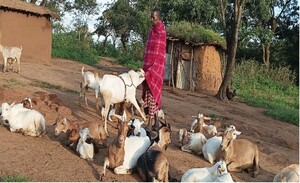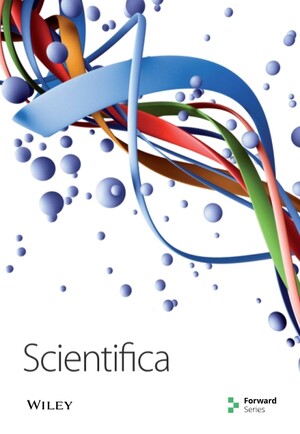
Culture of Kenyan goat (Capra hircus) undifferentiated spermatogonia in feeder-free conditions
Abstract
The undifferentiated spermatogonial population in mammalian testes contains a spermatogonial stem cell (SSC) population that can regenerate continual spermatogenesis following transplantation. This capacity has the potential to be exploited as a surrogate sires breeding tool to achieve widespread dissemination of desirable genetics in livestock production. Because SSCs are relatively rare in testicular tissue, the ability to expand a population in vitro would be advantageous to provide large numbers for transplantation into surrogate recipient males. Here, we evaluated conditions that would support long-term in-vitro maintenance of undifferentiated spermatogonia from a goat breed that is endemic to Kenyan livestock production. Single-cell suspensions enriched for undifferentiated spermatogonia from pre-pubertal bucks were seeded on laminin-coated tissue culture plates and maintained in a commercial media based on serum-free composition. The serum-free media was conditioned on goat fetal fibroblasts and supplemented with a growth factor cocktail that included glial cell line-derived neurotrophic factor (GDNF), leukemia inhibitory factor (LIF), stromal cell-derived factor (SDF), and fibroblast growth factor (FGF) before use. Over 45 days, the primary cultures developed a cluster morphology indicative of in-vitro grown undifferentiated spermatogonia from other species and expressed the germ cell marker VASA, as well as the previously defined spermatogonial marker such as promyelocytic leukemia zinc finger (PLZF). Taken together, these findings provide a methodology for isolating the SSC containing undifferentiated spermatogonial population from goat testes and long-term maintenance in defined culture conditions.
Citation
Nabulindo, N.W., Nguhiu-Mwangi, J., Kipyegon, A.N., Ogugo, M., Muteti, C, Christian, T., Oatley, M.J., Oatley, J.M. and Kemp, Stephen J. 2022. Culture of Kenyan goat (Capra hircus) undifferentiated spermatogonia in feeder-free conditions. Frontiers in Veterinary Science, 9: 894075.










